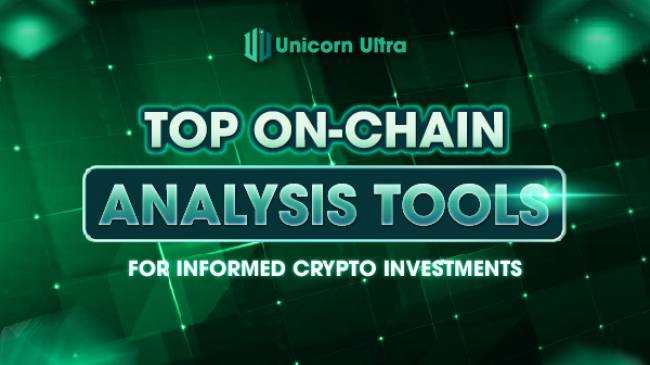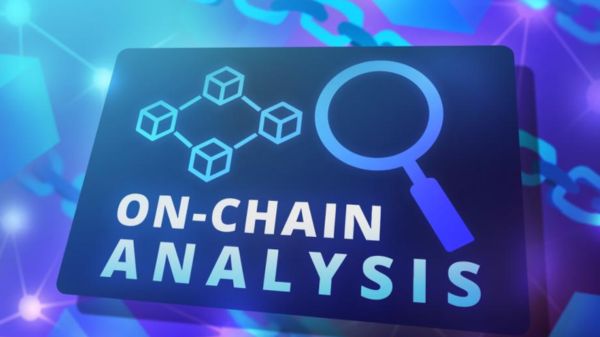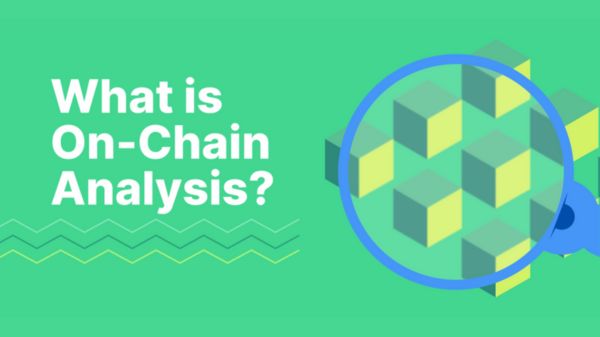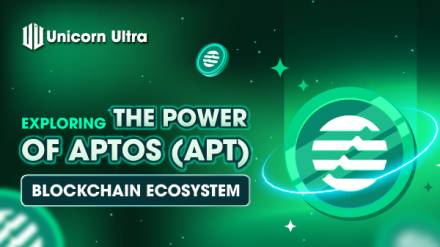In the world of cryptocurrencies, staying informed and making well-informed investment decisions is crucial. One of the most powerful ways to gain insights and make data-driven decisions is through on-chain analysis. On-chain analysis involves studying blockchain data to uncover trends, patterns, and behavior within cryptocurrency networks. In this blog post, we will explore what on chain data is, how on-chain analysis works, and delve into the top on-chain analysis tools available in 2023.
Table of Contents
Top On-Chain Analysis Tools

Dune
Dune is a popular on-chain analysis tool that provides comprehensive data and analytics for multiple blockchain networks. It offers a user-friendly interface, allowing users to explore and visualize on-chain data effectively. With Dune, users can track addresses, monitor network health, analyze smart contracts, and gain insights into token movements. Its robust querying capabilities make it a favorite among researchers and traders.
Glassnode
Glassnode is another powerful on-chain analysis platform that provides deep insights into blockchain networks. It offers a wide range of metrics and indicators to monitor network health, track market trends, and analyze user behavior. Glassnode's data-driven approach enables investors to make well-informed decisions based on on chain data.
Etherscan
Etherscan is a widely used on-chain analysis tool specifically tailored for the Ethereum blockchain. It offers real-time monitoring of transactions, contract interactions, and token transfers. With Etherscan, users can explore addresses, view token balances, track smart contract activities, and access historical data. It is an essential tool for Ethereum enthusiasts and investors.
Nansen
Nansen is a comprehensive on-chain analytics platform that focuses on Ethereum and ERC-20 tokens. It provides detailed insights into network activity, token flows, and market trends. Nansen's unique feature is its "Smart Money" analysis, which identifies significant holders and tracks their behavior, helping investors gain valuable insights into market sentiment.
CryptoQuant
CryptoQuant is a data analytics platform that offers on-chain insights for various blockchain networks, including Bitcoin, Ethereum, and more. It provides data-driven charts, indicators, and market signals to help traders make informed decisions. CryptoQuant also offers whale alerts, exchange inflow/outflow data, and on-chain transaction volume analysis, making it a valuable tool for monitoring market dynamics.
Token Terminal
Token Terminal focuses on providing transparent and accurate on-chain financial metrics for decentralized finance (DeFi) protocols. It offers users insights into revenue generation, user activity, and protocol valuations. Token Terminal's data-driven approach helps users assess the financial health and growth potential of DeFi projects.
How Does On-Chain Analysis Work?
On-chain analysis typically involves collecting, processing, and analyzing vast amounts of blockchain data. Various techniques and tools are used to extract meaningful information from the data. These tools enable users to explore transaction history, monitor network health, detect anomalies, track specific addresses, and much more.
Benefits of On-Chain Data

- Enhanced Transparency: On chain data provides a transparent view of cryptocurrency transactions and activities, enabling users to verify and validate information independently.
- Market Insights: On-chain analysis tools offer valuable market insights, allowing investors to identify trends, assess sentiment, and make data-driven investment decisions.
- Risk Mitigation: By analyzing on-chain data, investors can identify potential risks, such as suspicious activities or market manipulation, and make informed decisions accordingly.
- Improved Investment Strategies: On-chain analysis helps investors understand the behavior of market participants, enabling them to develop more effective investment strategies.
How to use on-chain analysis tools?
On-chain analysis tools allow users to gather insights and data from blockchain networks, providing valuable information about transactions, addresses, and network activity. Here's a general guide on how to use on-chain analysis tools effectively:
- Choose an On-Chain Analysis Tool: There are various on-chain analysis tools available, each with its own features and capabilities. Some popular options include Etherscan, CoinMetrics, Glassnode, and TokenAnalyst. Research and select a tool that aligns with your specific needs and the blockchain network you want to analyze.
- Familiarize Yourself with the User Interface: Once you've chosen an on-chain analysis tool, spend time exploring its user interface and understanding its features. Pay attention to the available search functions, data visualizations, and filtering options. Many tools provide tutorials, guides, or documentation to help users navigate their platforms effectively.
- Search and Explore Blockchain Addresses: Enter specific blockchain addresses you want to analyze into the search bar of the on-chain analysis tool. This can include addresses associated with wallets, exchanges, or specific transactions you want to investigate. The tool will provide information such as transaction history, balances, and token holdings associated with the address.
- Analyze Transactions and Transaction History: On-chain analysis tools allow you to examine individual transactions or transaction history for specific addresses. You can explore details such as the sender and receiver addresses, transaction timestamps, transaction amounts, gas fees, and other metadata associated with each transaction. This information can help you understand the flow of funds and identify patterns or anomalies.
- Monitor Network Metrics: Many on-chain analysis tools provide real-time network metrics and statistics. These metrics can include transaction volumes, block confirmations, average gas prices, active addresses, and more. Monitoring network metrics can give you insights into the overall health and activity of the blockchain network.
- Explore Token Data and Analytics: If you're analyzing a specific token on the blockchain, on-chain analysis tools often provide token-specific data and analytics. This can include token supply, distribution, token transfers, top holders, and token performance metrics. Dive into these details to gain a deeper understanding of the token's dynamics and usage patterns.
- Utilize Advanced Features and Filters: On-chain analysis tools often offer advanced features and filters to narrow down your analysis. These can include date filters, transaction type filters, token-specific filters, or smart contract analysis tools. Experiment with these features to focus your analysis on specific aspects or criteria.
- Stay Updated with Tool Updates and New Features: On-chain analysis tools continuously evolve, introducing new features and improvements. Stay informed about tool updates, new data visualizations, or additional analytics capabilities that can enhance your analysis process.
Remember that on-chain analysis tools provide data and insights, but the interpretation and analysis are still up to the user. Be mindful of the limitations of on-chain analysis tools, as they might not capture all off-chain or privacy-related activities. It's important to complement your on-chain analysis with other research methods and consider multiple data sources to gain a comprehensive understanding of the blockchain ecosystem you are analyzing.

What is the future of on-chain analysis?
The future of on-chain analysis looks promising as blockchain technology continues to evolve and gain broader adoption. Here are some potential developments and trends that may shape the future of on-chain analysis:
- Enhanced Privacy Analysis: As privacy-focused blockchain technologies like zero-knowledge proofs and privacy coins become more prevalent, on-chain analysis tools may need to adapt to handle these privacy-preserving transactions. The focus will be on developing improved privacy analysis techniques that can provide insights while respecting user privacy.
- Deeper Smart Contract Analysis: Smart contracts are integral to many blockchain networks, and analyzing their behavior and interactions will become increasingly important. On-chain analysis tools may evolve to provide more comprehensive smart contract analysis, including detecting vulnerabilities, tracking contract upgrades, and identifying complex interactions between multiple contracts.
- Cross-Chain Analysis: As interoperability solutions and cross-chain protocols gain traction, on-chain analysis tools may expand their capabilities to analyze transactions and interactions across multiple blockchains. This will enable a holistic view of token movements and activities in a multi-chain environment.
- Real-Time and Predictive Analytics: On-chain analysis tools may improve their real-time monitoring capabilities, providing more up-to-date insights into blockchain activities. Additionally, the use of predictive analytics and machine learning algorithms could help identify patterns and trends, enabling users to make more informed decisions based on future projections.
- Improved Visualization and User Interfaces: On-chain analysis tools are likely to enhance their data visualization capabilities, making complex on chain data more accessible and understandable for users. User interfaces may become more intuitive, enabling users to explore and analyze blockchain data more efficiently and effectively.
- Regulatory Compliance Solutions: As blockchain technology faces increasing regulatory scrutiny, on-chain analysis tools may evolve to offer enhanced compliance features. These may include features to track and analyze transactions for anti-money laundering (AML) and know your customer (KYC) purposes, as well as providing tools to aid regulatory reporting and auditing.
- Integration with Decentralized Finance (DeFi): With the rise of decentralized finance (DeFi), on-chain analysis tools may integrate more closely with DeFi protocols and applications. This integration could enable users to analyze and track their DeFi positions, yield farming activities, liquidity pool interactions, and token swaps.
It's important to note that the future of on-chain analysis will depend on technological advancements, regulatory developments, and the evolving needs of blockchain ecosystems. As blockchain technology continues to mature, on-chain analysis tools are expected to evolve in parallel, providing users with more sophisticated analysis capabilities to navigate the complexities of blockchain data.
On-chain analysis has emerged as a powerful tool for gaining insights and making informed investment decisions in the cryptocurrency market. The top on-chain analysis tools mentioned in this blog post, including Dune, Glassnode, Etherscan, Nansen, CryptoQuant, and Token Terminal, provide users with the necessary data and analytics to navigate the complex crypto landscape successfully. By harnessing the power of on-chain data, investors can stay ahead of the curve and make well-informed decisions in the dynamic world of cryptocurrencies. Follow Uniultra.xyz for more blockchain updates.






